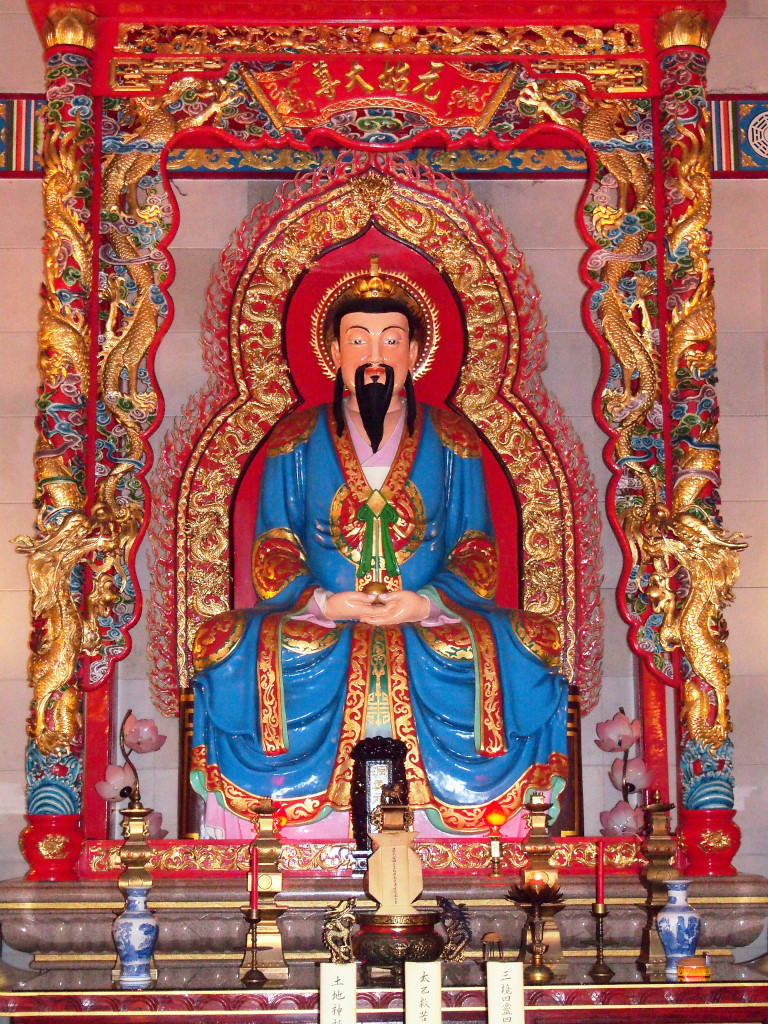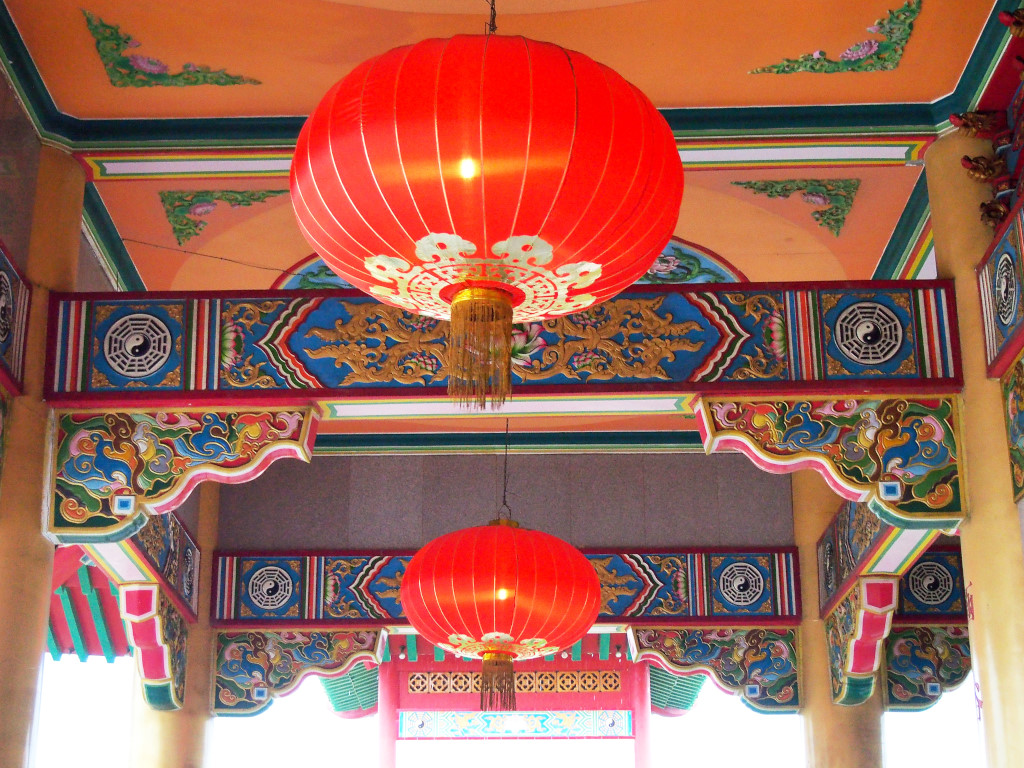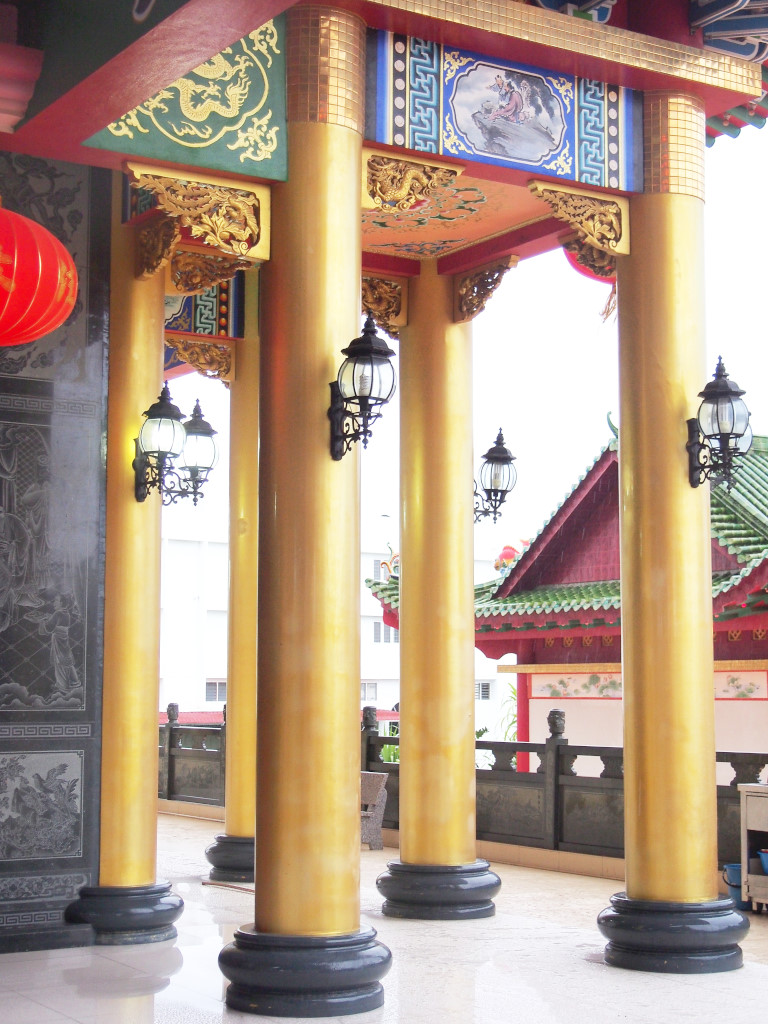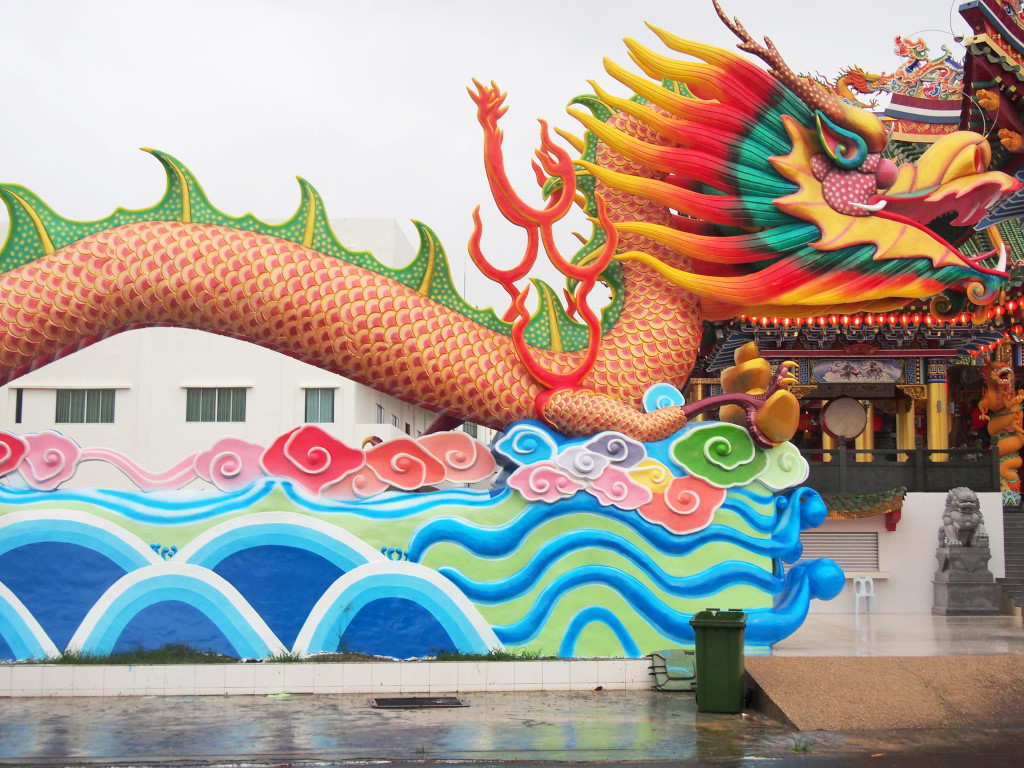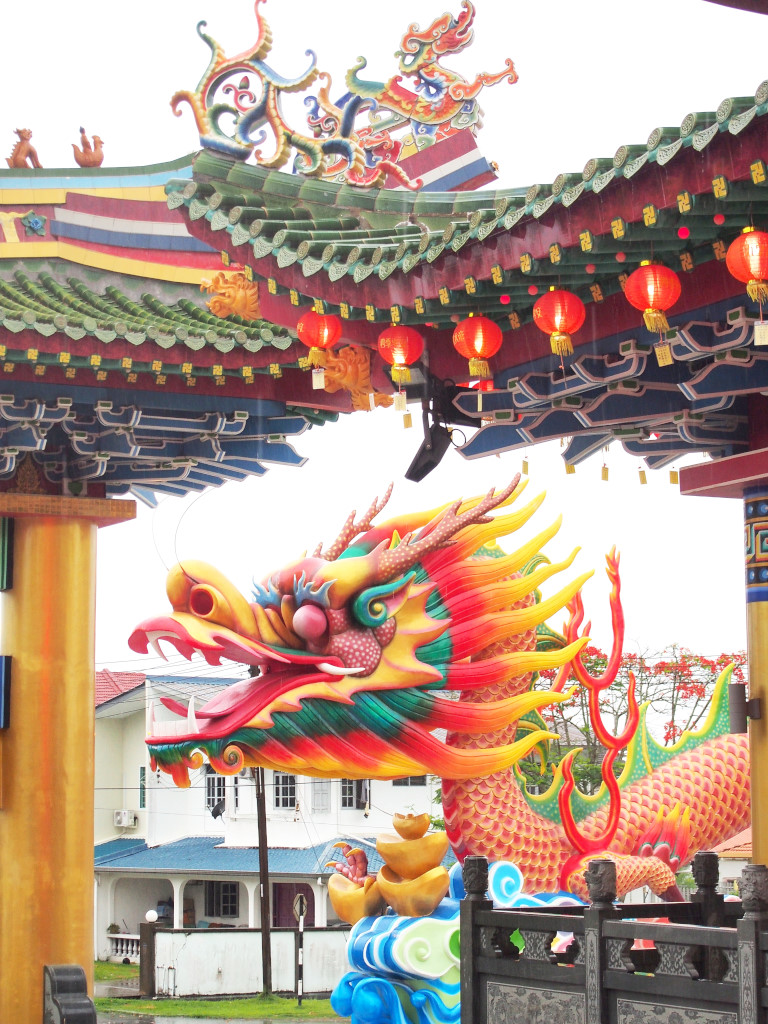May 1st, 2015
I wake up early and mope around my miniscule room the bulk of the morning, seemingly incapable of getting anything done. It is becoming increasingly apparent that I am not feeling well, as I am unable to concentrate, have low energy, mild headaches, and above all my stomach is cramping badly. The few innocent beer consumed yesterday evening have taken their toll on my stomach that is far from settled.
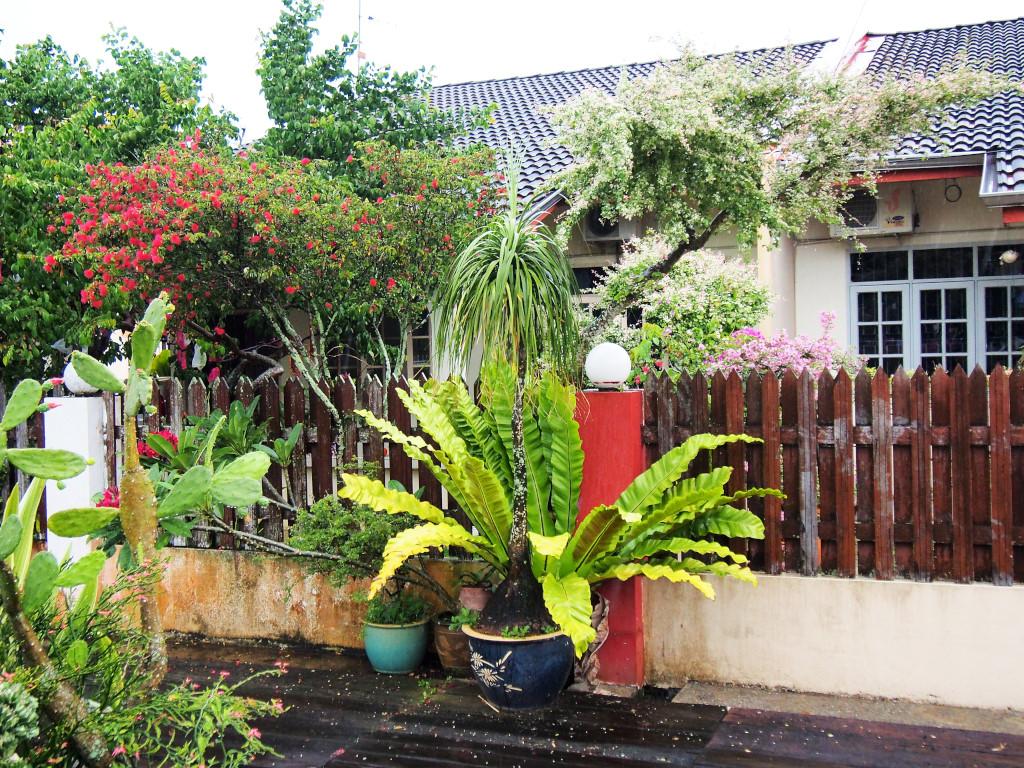
It would seem unrealistic to expect every day in some way to be deemed productive. I am really not in the mood to do anything today, and would rather just lie in bed. However, in one short heroic burst, I write in my journal and get some other minor details taken care on online, still basking in the luxury of excellent internet, which was far from available in Myanmar.
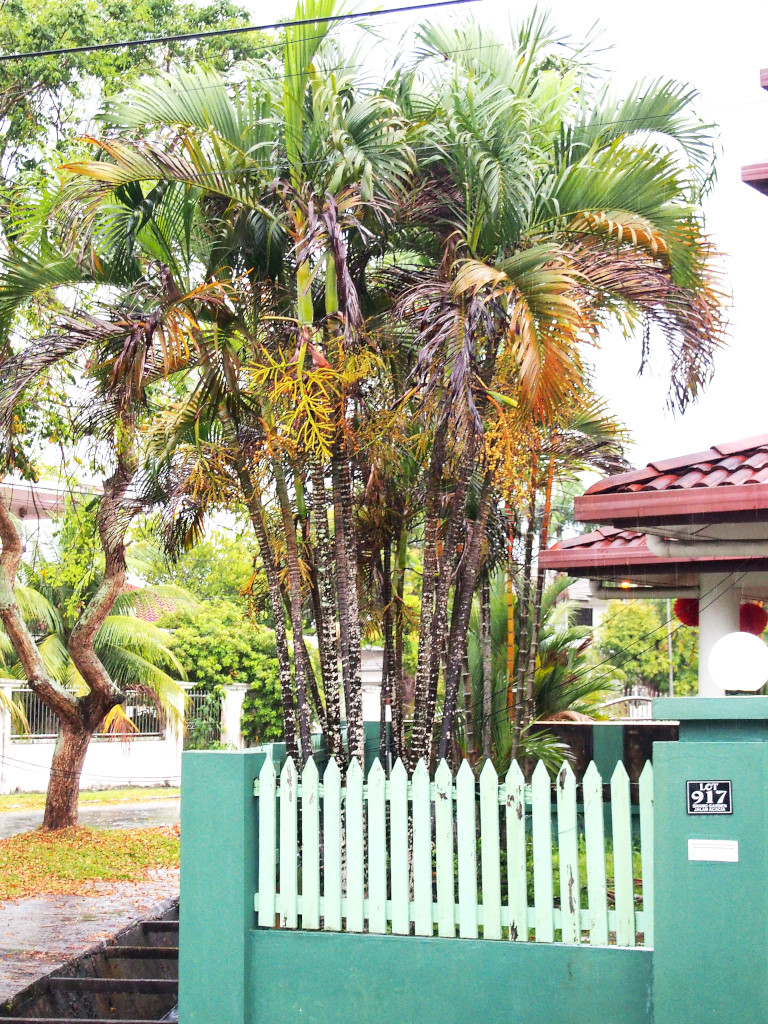
Downstairs, Frank happens to be wrapping up his breakfast, and can’t keep his eyes off every female that walks by. At least in Thailand he could just drop by the nearest massage parlour for a good time, and it would cost next to nothing. I keep my mouth shut, but am incredibly thankful I am not in Thailand anymore, a country destroyed by the sleaze we have exported to it over generations.
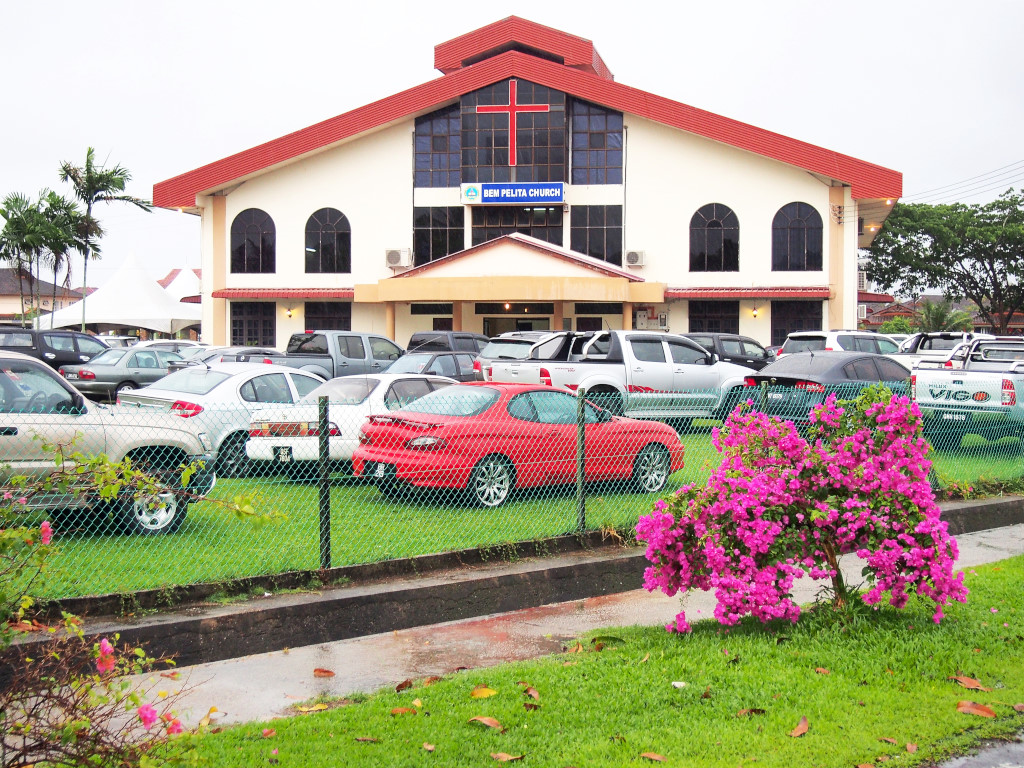
Frank has booked himself into another cheap hotel in the centre, although I see little point to it, given that they are all the same. We agree to meet later on in the afternoon to take in Bukit Canada together, but returning to the hotel room for an extended bout of writing, the sky turns dark and dismal, the rains at first gentle, but then relentless in their intensity.
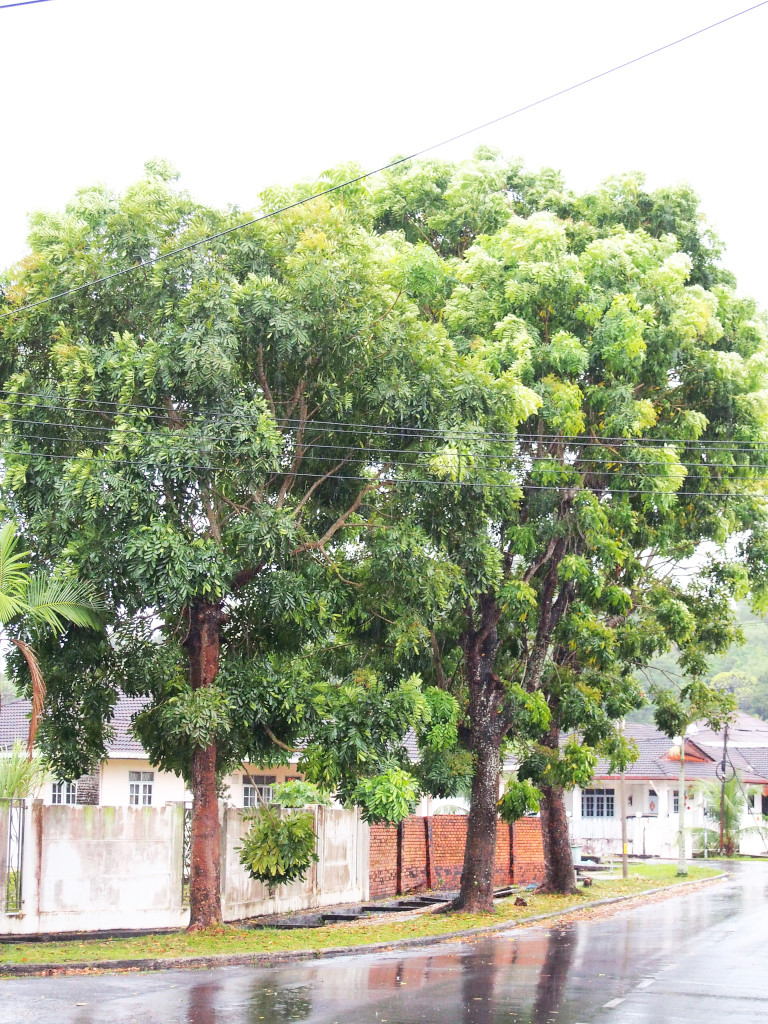
The Secret Recipe outlet down the street has a fantastic selection of somewhat stale cheesecakes and espresso-based coffees. Funny how I plodded through most cities of any size in west Malaysia last year, and it never occurred to this avowed coffee addict to even look at the menus in Secret Recipe outlets.
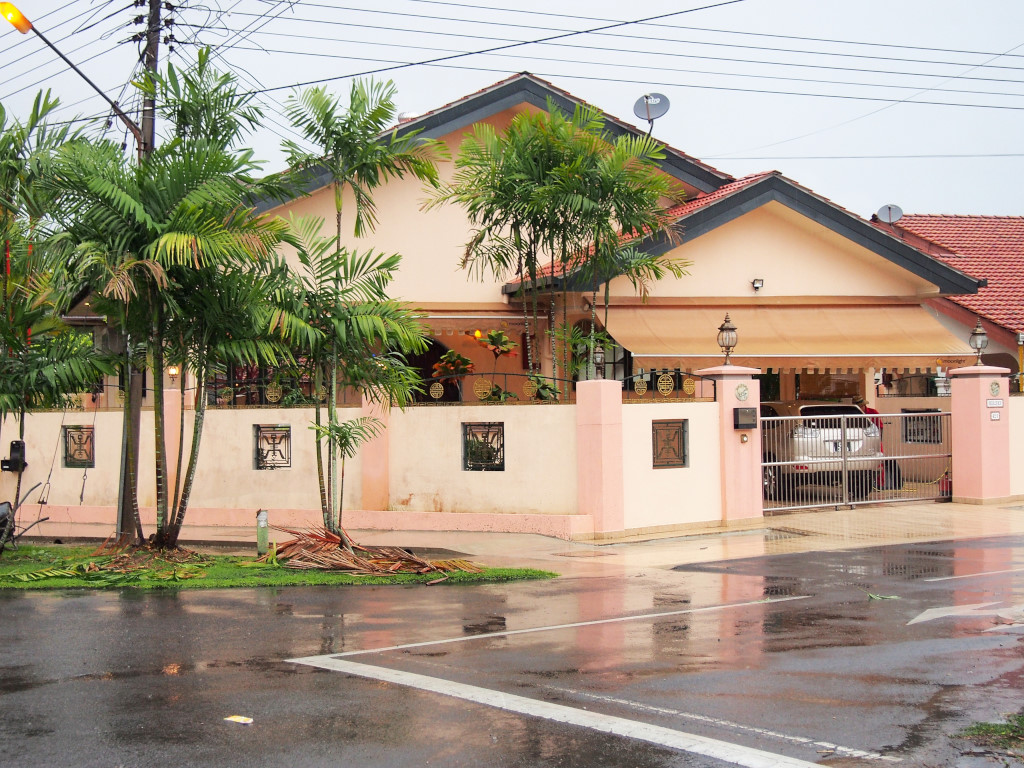
But the past is the past, and here I am, imbibing on absolutely the last kind of indulgences that an infected stomach should afford. In that respect, I have to concede that I am following in the footsteps on my venerable mother, which I am not ashamed of.
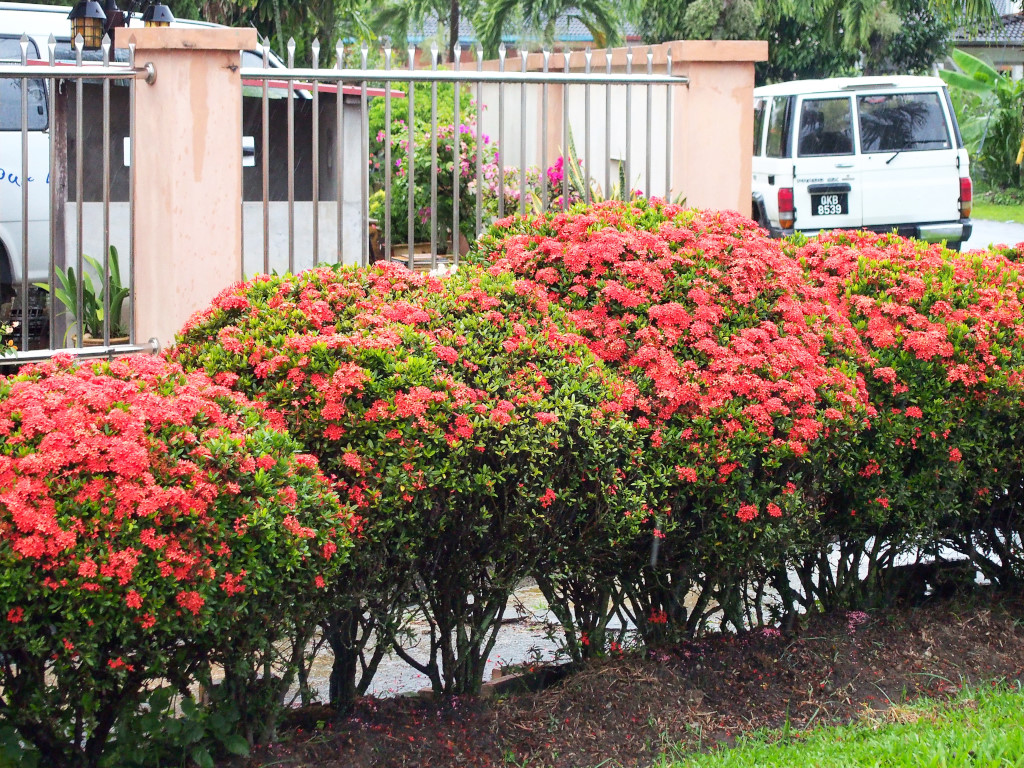
More writing in the hotel room, the stormy weather not abating, the idea of heading up to Bukit Canada to see the oil rig with Frank out of the question. Unfortunately I have no contact information for him, so I hope he won’t be waiting too long for me in the bar before heading off, although I can’t see him being that interested in a historic oil rig to want to get absolutely drenched in the rain.
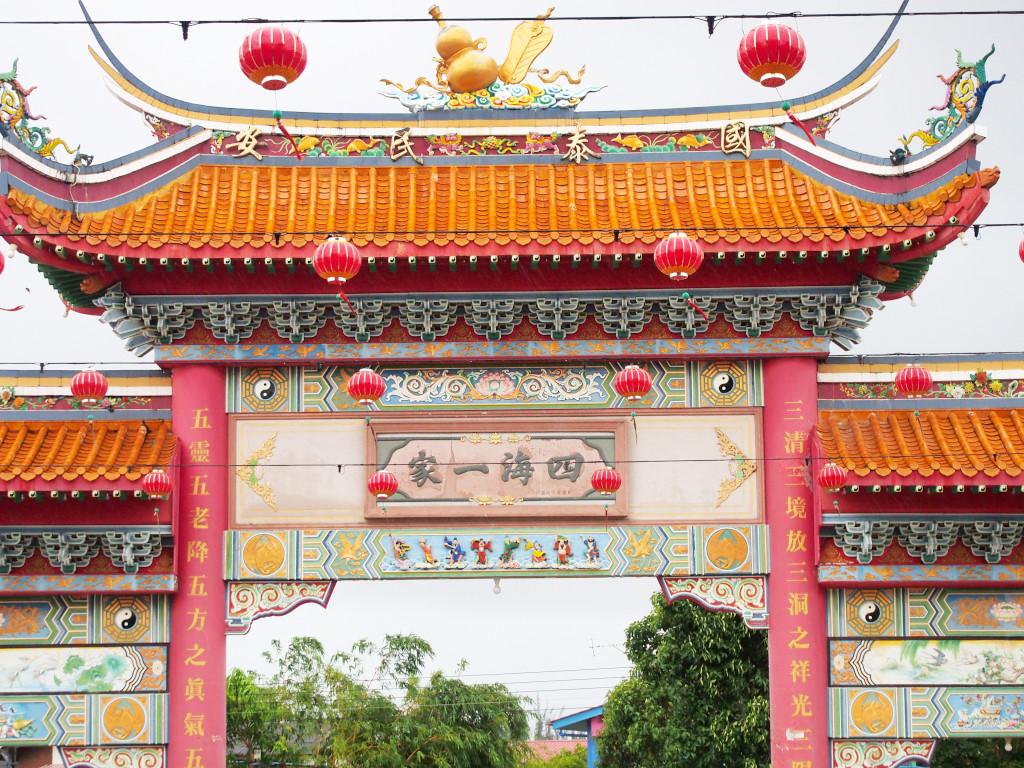
The San Ching Tian temple seems like a good option, and from the tourist map I have been provided with, it seems like an interesting possibility for the afternoon. On the other hand, no one at the hotel or in the neighboring shops really has any idea as to what I am talking about, and probably for good reason.
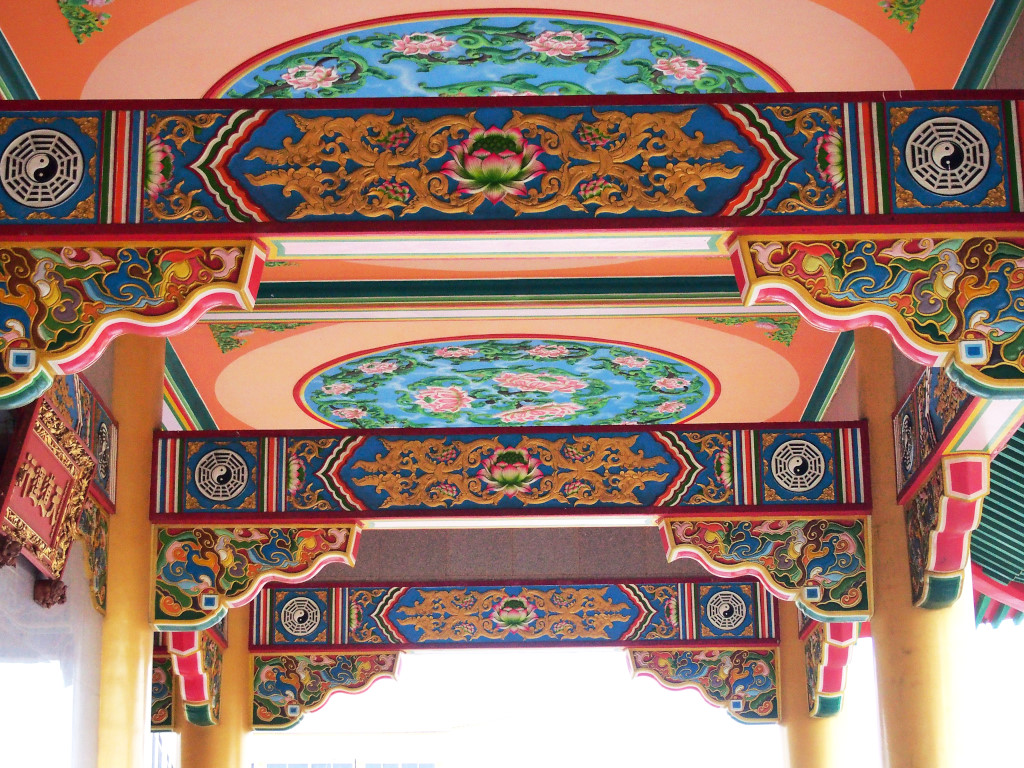
On my excursion through the light rain into the wealthy residential areas west of Pelita centre, in the direction the temple is apparently located, I am informed at a Buddhist society office of some sort that the temple is nowhere near the area. Happily one of the men present is about to drive right by the facility and can take me along. And no, I would never have found my way to this place, given the convoluted path we follow to the San Ching Tian temple.
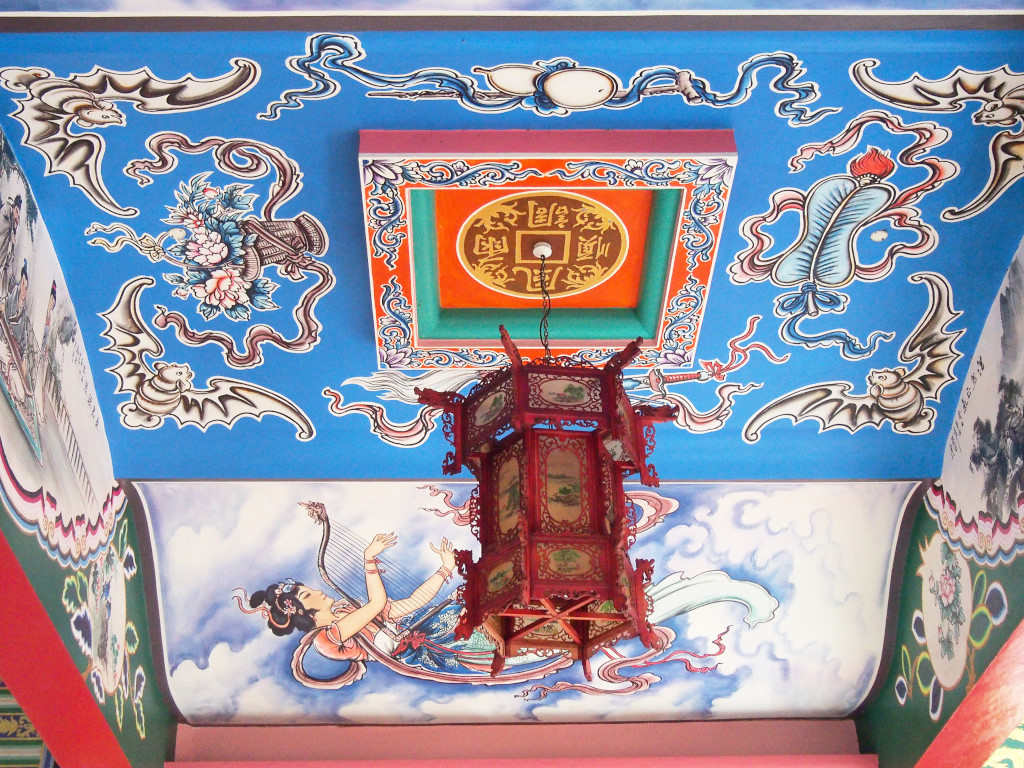
Set in another sprawling, rain-drenched and affluent neighborhood with wide streets and ample flowering bushes, the temple follows a typical layout for Taoist temples, a large gate beckoning guests to pass through and climb up to the enormous pavilion, a sculpted metal cauldron full of sand at the base of the stairs leading to the temple, and another on the landing leading into the open-sided structure.
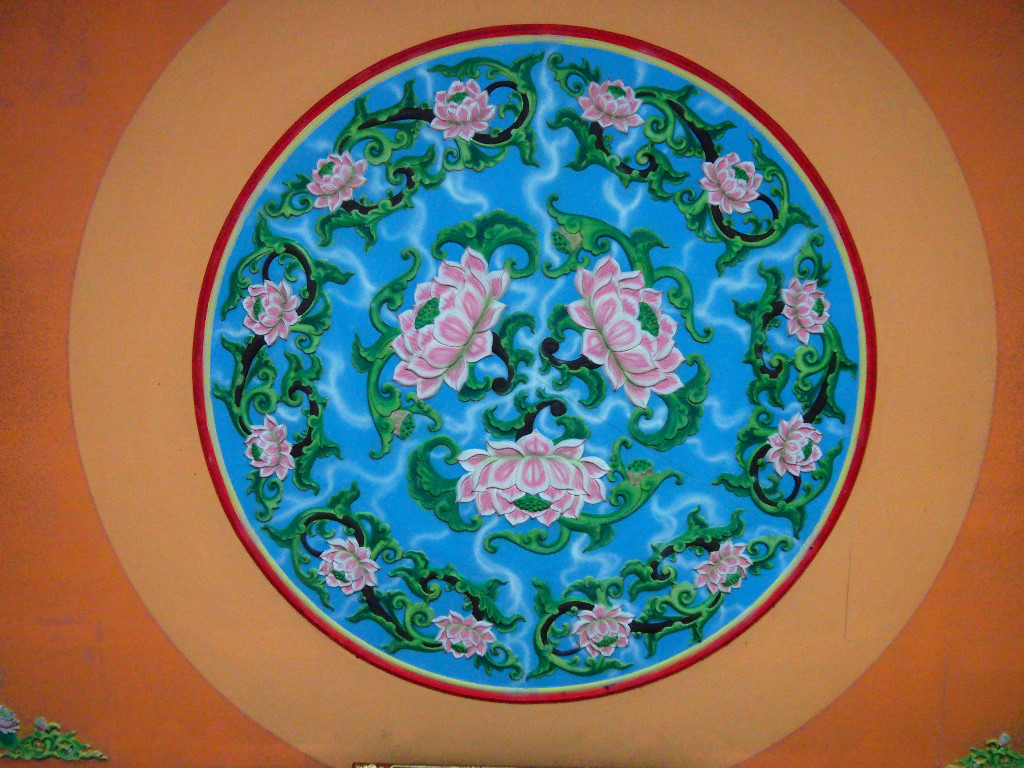
The gate’s painted panels tower over the stylized dragons rearing on either side of the entrance, and in the temple itself, the pink lotus-flower candles sit sedately on the table before the tall idols erected in their finery, set against the wall in elaborately sculpted gilt frames.
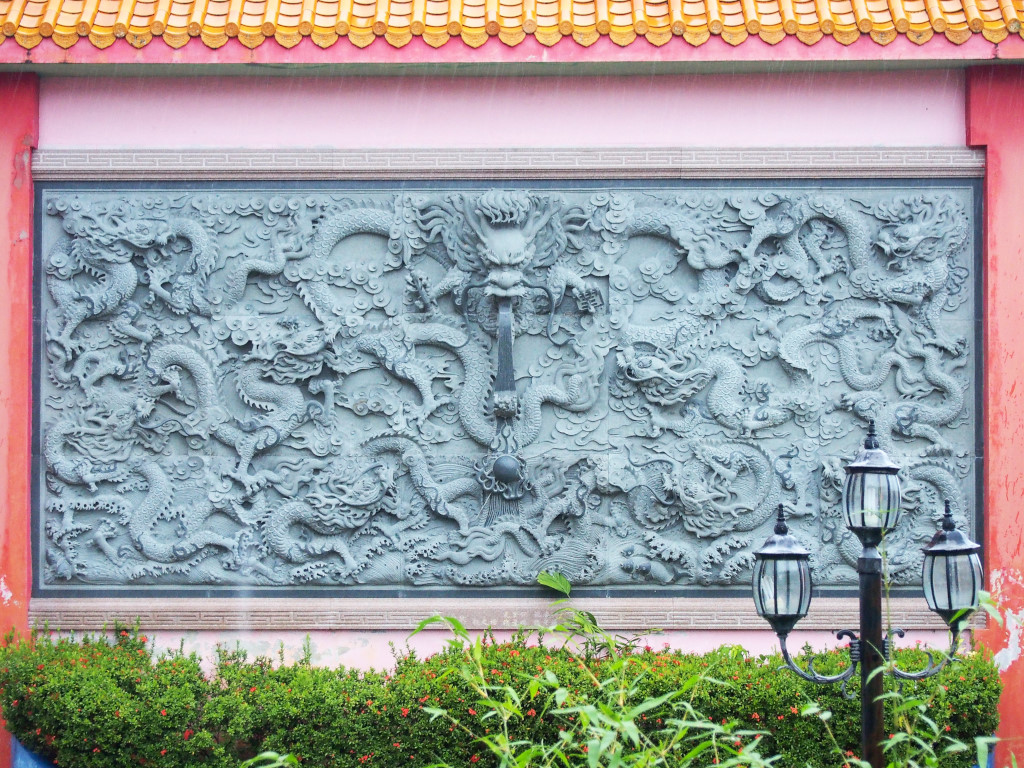
The typical red lanterns alternate with the dropped blue and gold relief panels running along the side of the roofline, culminating in blue ribbing and intricately patterned soffit work. In the gardens below lies a narrow gazebo and detailed carved stone panel swarming with mythical dragons.
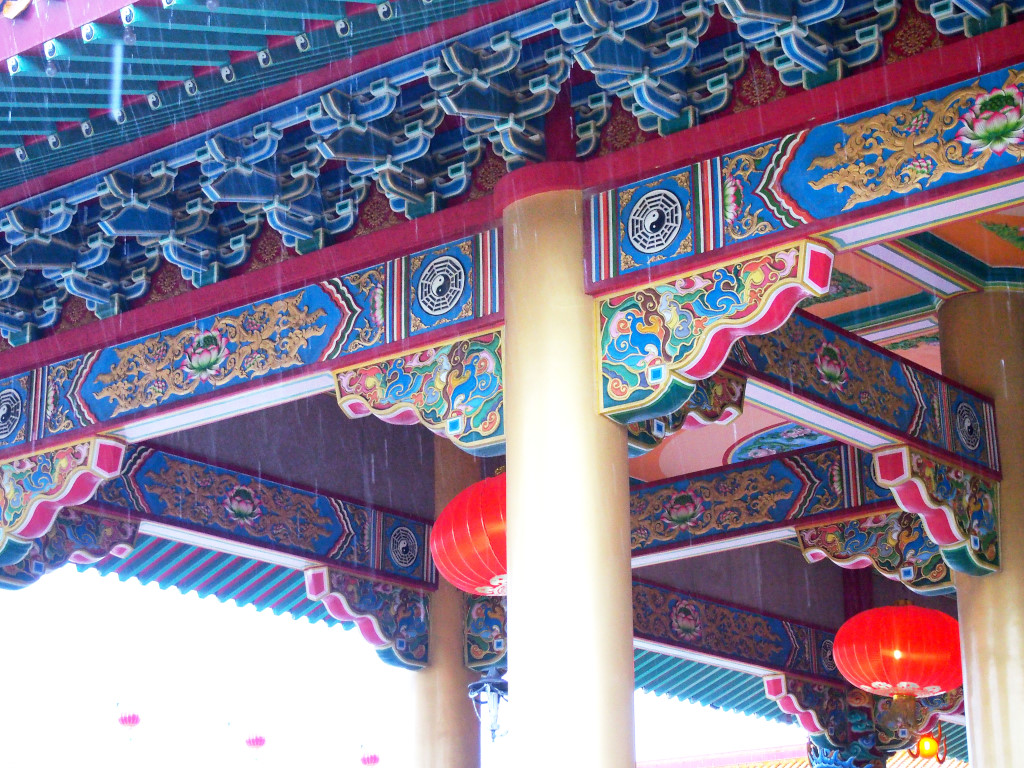
As photogenic as Taoist temples normally are, this rain is terrible for getting good photos, and in any case, the temple is rather formulaic and uninteresting, despite the typical preponderance of bright colours, given the dramatic settings such temples are often found in Malaysia.
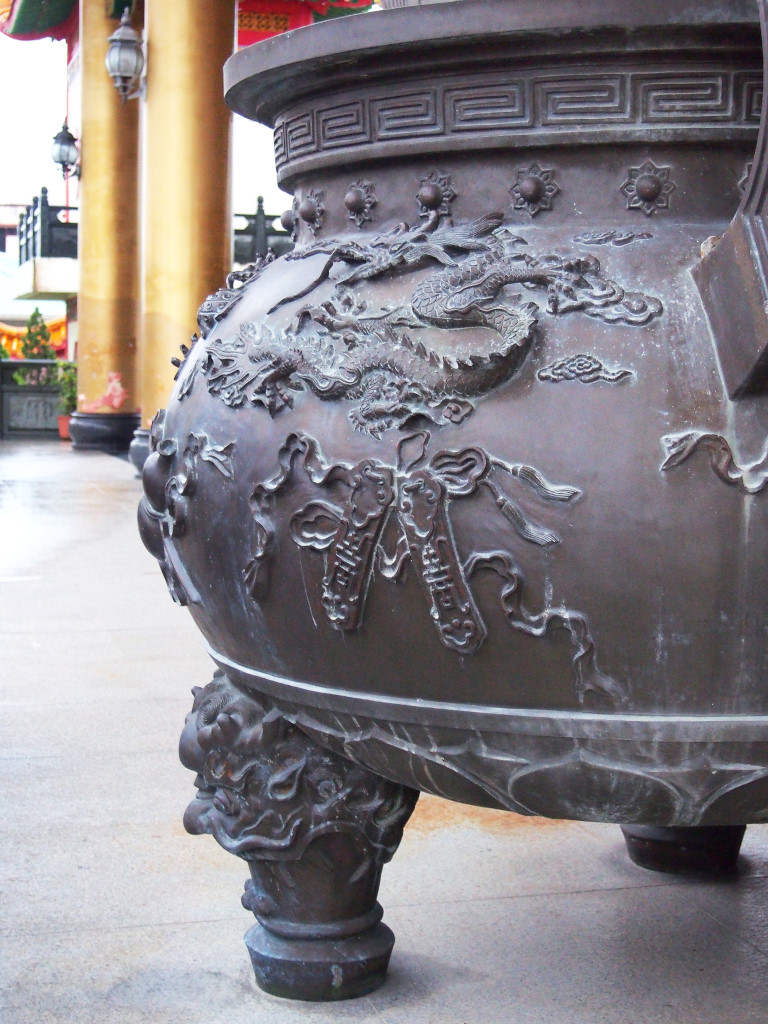
The brilliantly painted stylized dragons rearing along the entrance of the adjoining temple are of gargantuan proportions, the barely finished structure vying with its neighbor for ostentatiousness.
Much of the architecture is similar, with the elaborately sculpted gate leading visitors into the courtyard and up the steps to the temple interior, now unfortunately locked.
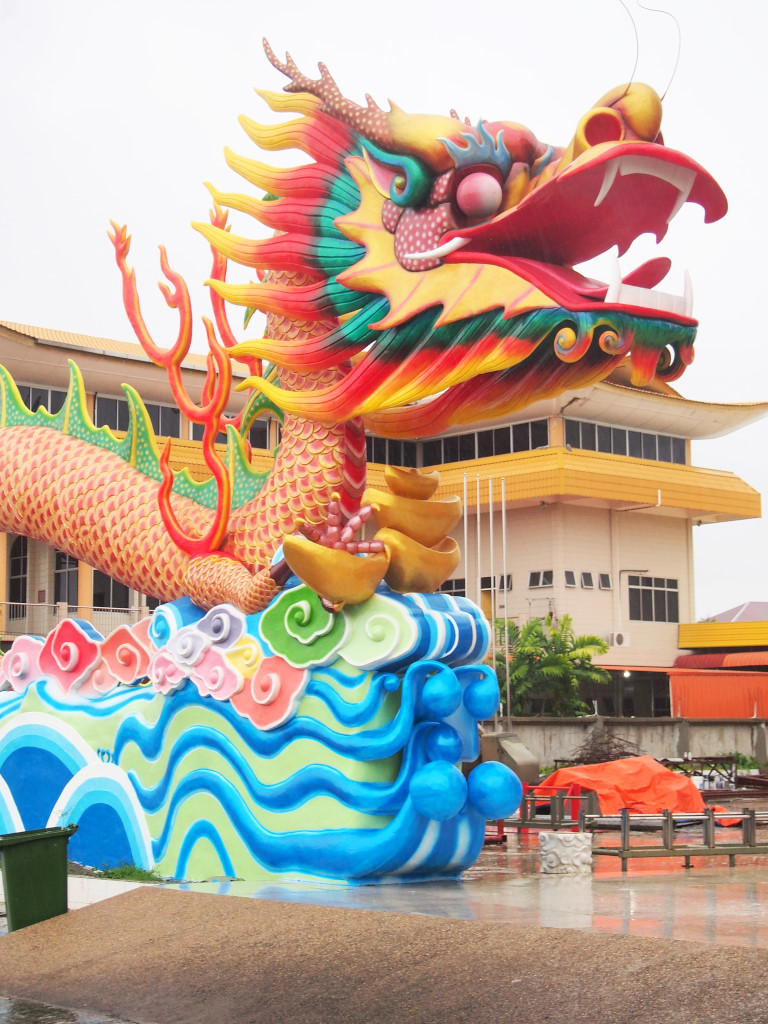
Tall gold columns support the elaborate roof, the underbody lined with evenly spaced red lanterns, culminating in a pair of small green dragons rearing towards the gold-studded arched doors of the temple entrance. Again, the brilliant colours of the complex are offset by the pouring rain, resulting in flat and greyish photos.
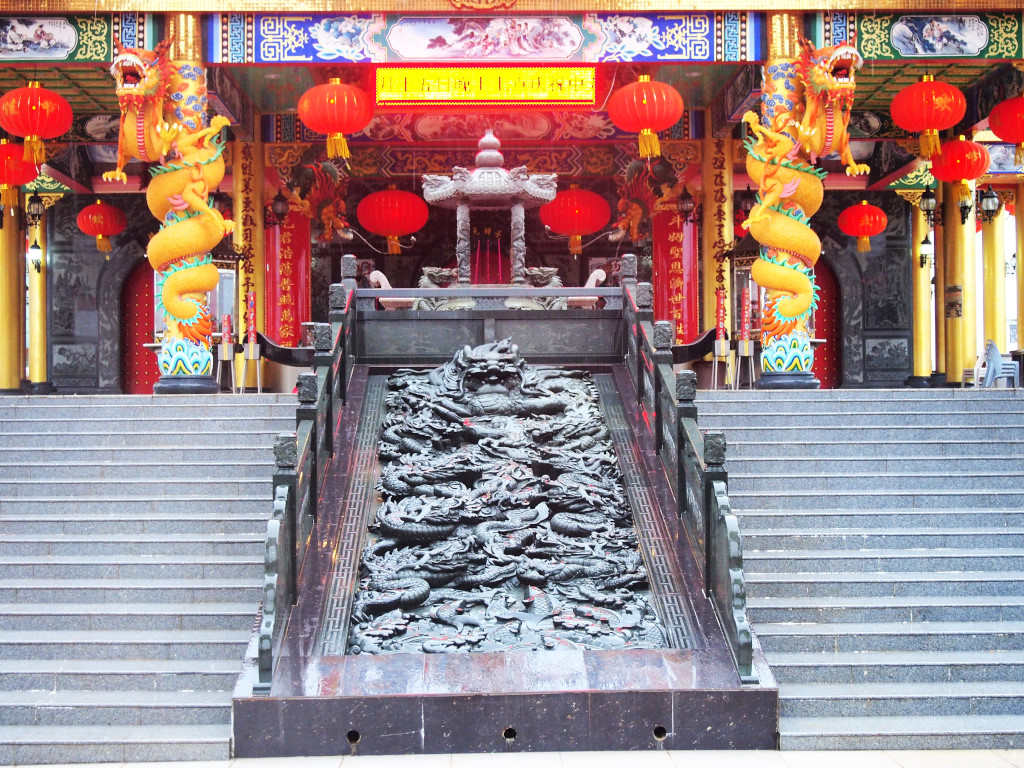
Here the stone panel with stylized dragons is smaller and reclined against the centre of the staircase leading to the bulky columns, around which virile dragons poise coiled. As in the case of the preceding structure, an elaborate web of soffit work lines the outer roofline, its canopy slightly swooping green ceramic ribbing.
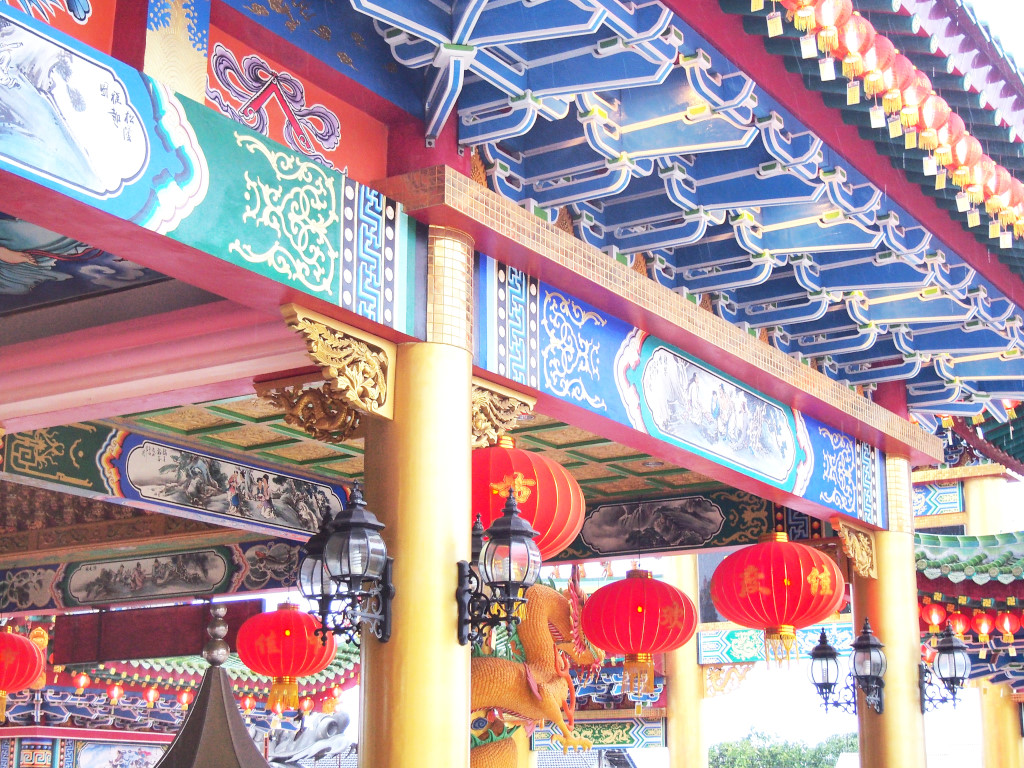
My next destination is the Saberkas weekend night market, probably set at quite some distance from the duo of temples I am visiting. I am not exactly sure how far the temple could be from here, given that I am not even sure where I am on the map of Miri, but at least I can attempt to recall the route we took here.
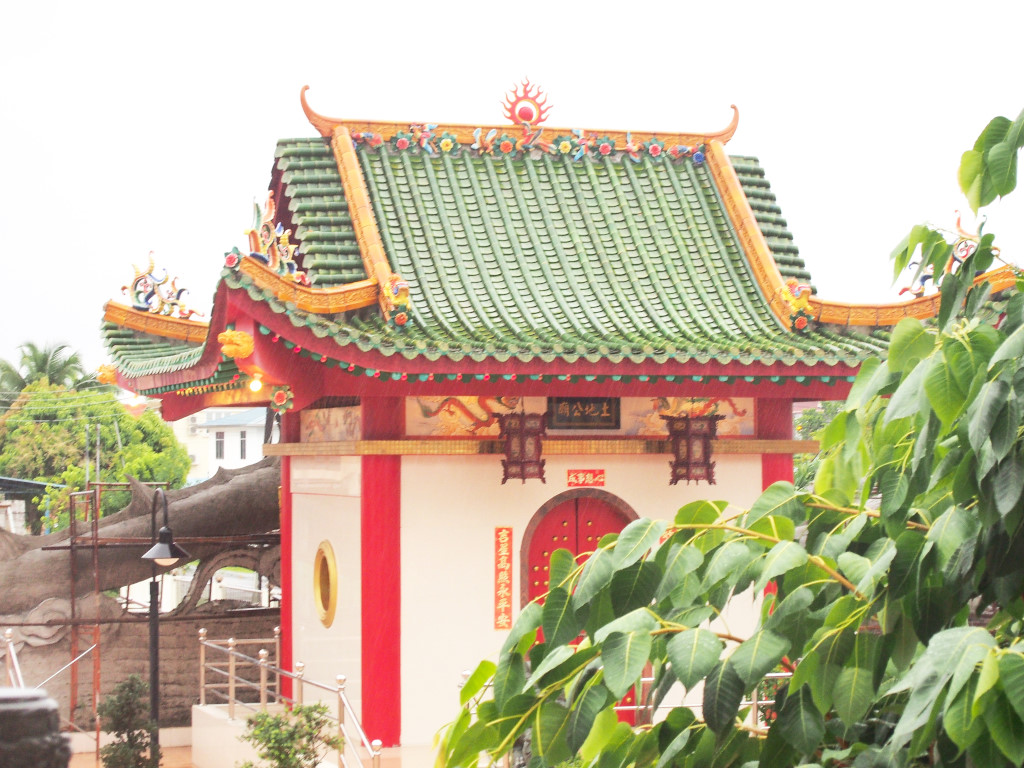
Trudging along the broad rain-swept streets, there is very little traffic, the Labour Day weekend hardly inducing citizens to pick up and race off somewhere, the large pools of water accumulated by the sides of the road making my job somewhat more difficult.
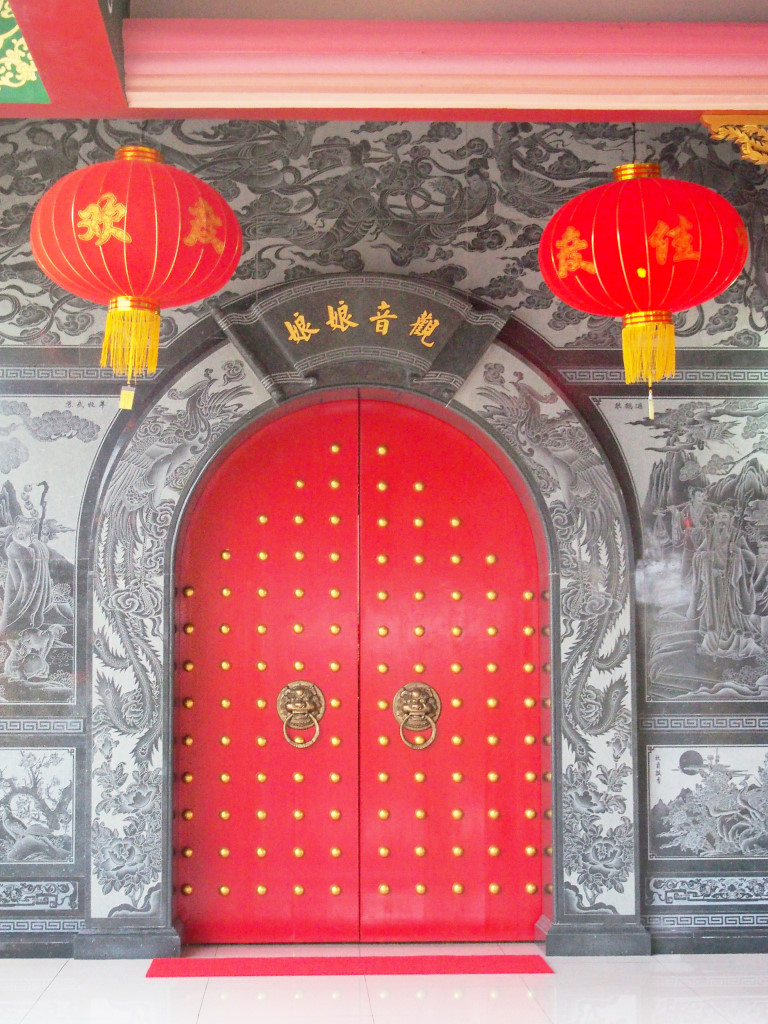
Trivial as it may seem, my beloved sandals are hardly that functional with wet feet sloshing around them, but more important right now would be making sure I don’t step onto some poisonous viper slithering out of a sewer and into a random pool of water.
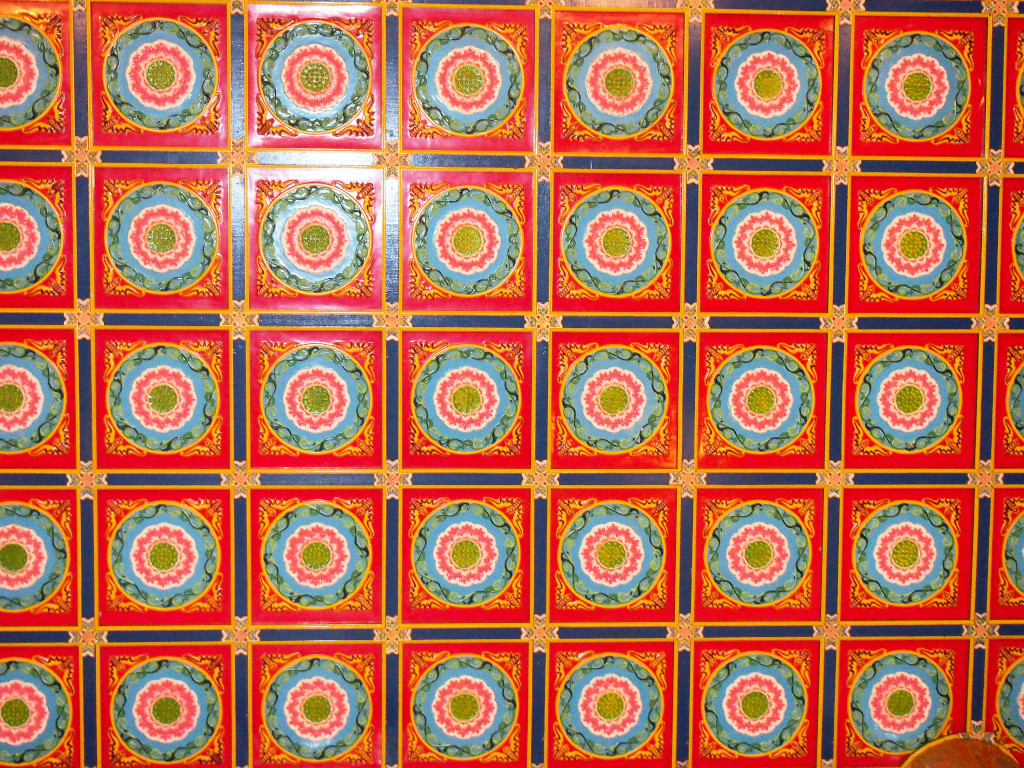
The open trenches lining the roads are rushing with water, and walking along the covered passages lining the channels is a bit of a tossup, considering that one slip would send me flying into the rapids. On the other hand, navigating back and forth across the intersection garners some strange looks from locals (given that no one walks here).
The downside of walking along the recessed concrete passage on Jalan Bukit Sabit becomes apparent when not just one but several oncoming vehicles plow at high speed through deep pools of water, the moment suspended in time when I look up to see a huge arc of water flying toward me at high speed, with predictable consequences.
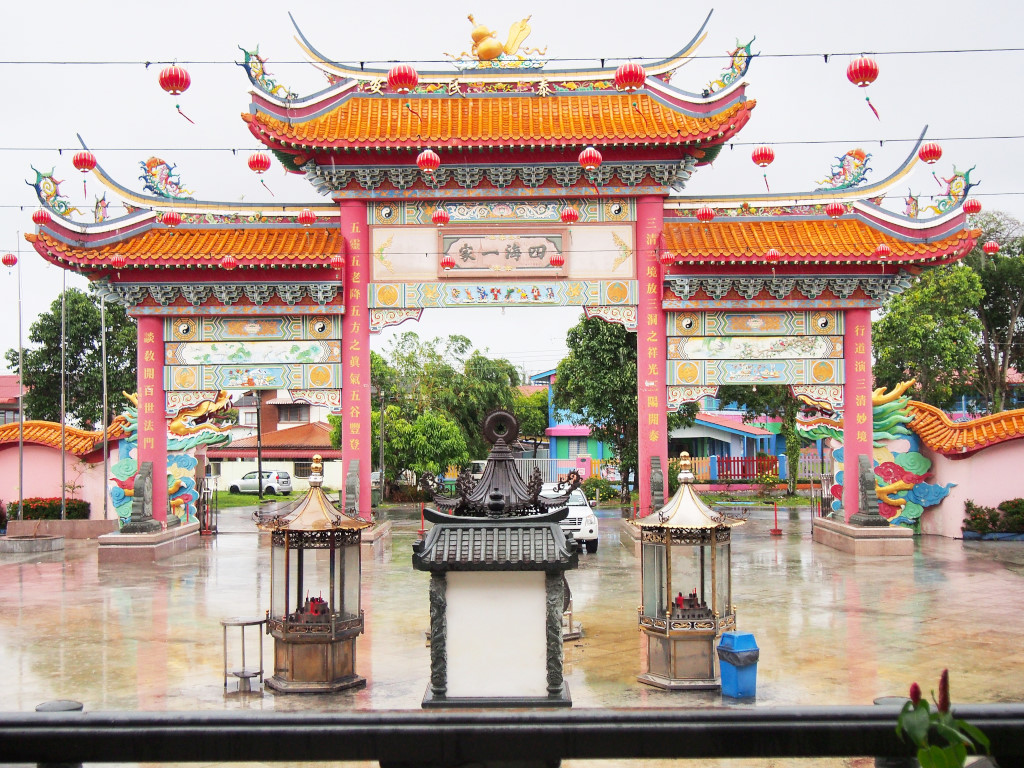
Crossing the highway to the gas station and McDonalds, I must cut a fairly embarrassing sight in my utterly drenched state, but then Malaysia is in no way a pedestrian-friendly country. At least the air in the McDonalds is relatively clean and it is not boiling hot.
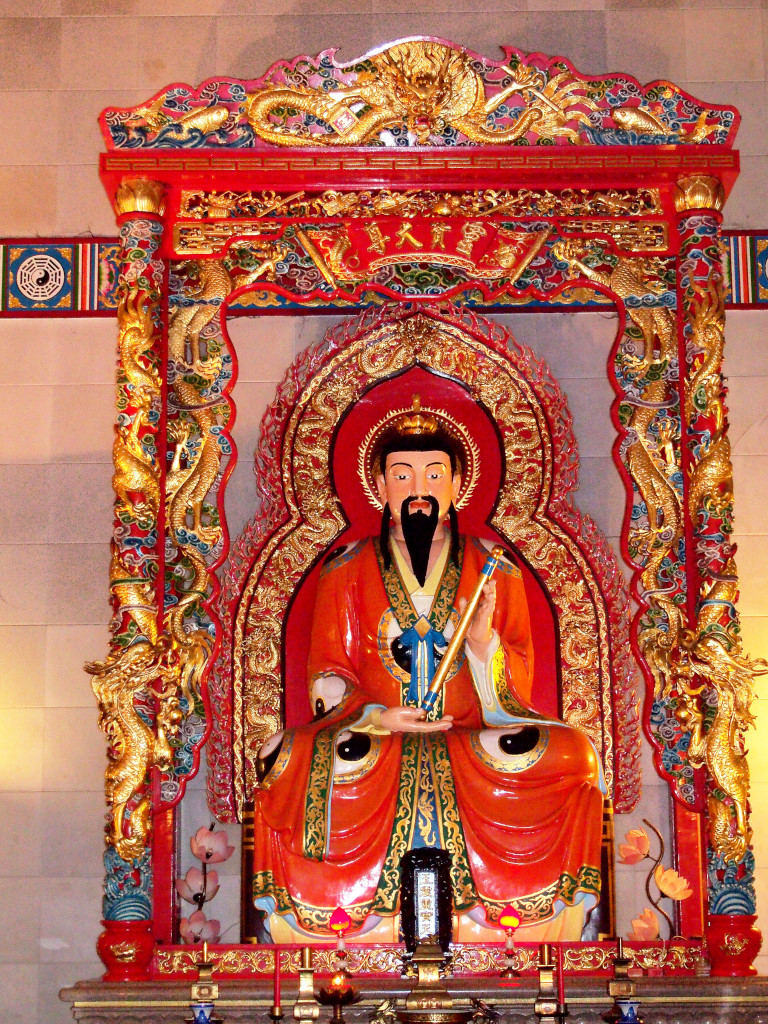
One woman stops to offer me a ride to the Boulevard Shopping Centre, explaining that she sympathizes with the situation of tourists, as she herself was a tour guide for years, specifically in Gunung Mulu park, and has also passionately traveled around the world. In my excitement I don’t pick up her cues to get out of the car until she tells me pointedly I do need to disembark, as she will be late for an appointment.
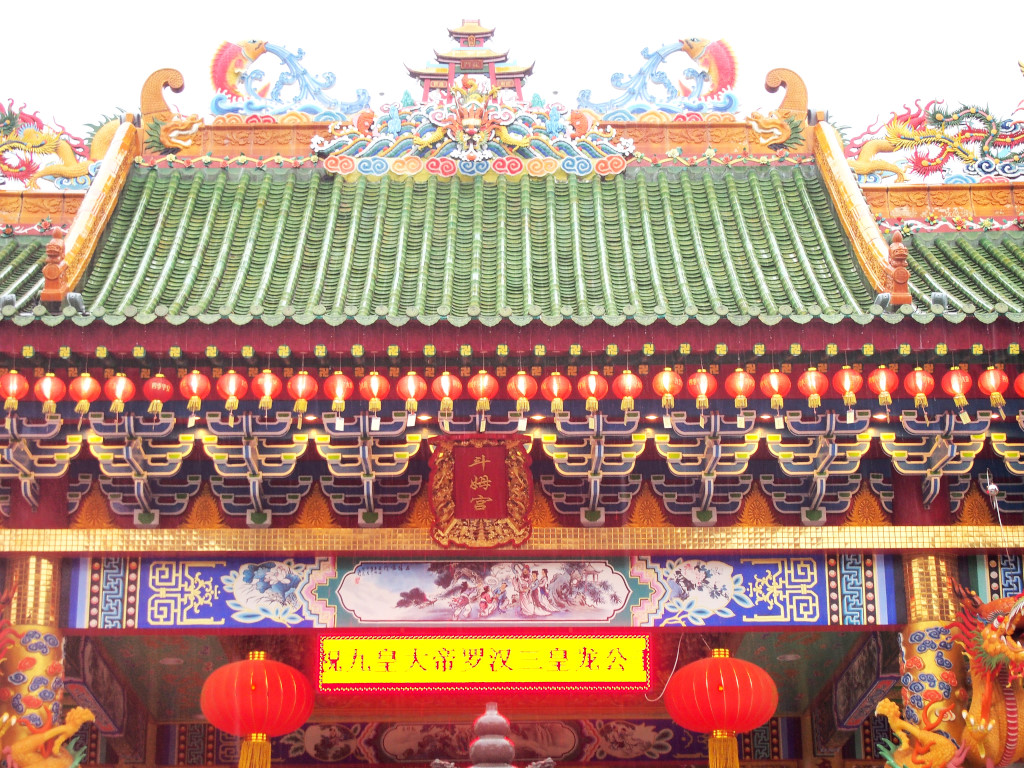
The mindless chatter continues at the Maker cafe next to the somewhat diminutive Boulevard Commercial Centre shopping mall, a bright and modern coffee shop with a twist, the walls, counters and household goods for sale embellished with Christian-themed aphorisms. I guess the place won’t be attracting much in the line of a Malay clientele, not that the Malay people have much of a presence in Malaysian Borneo.
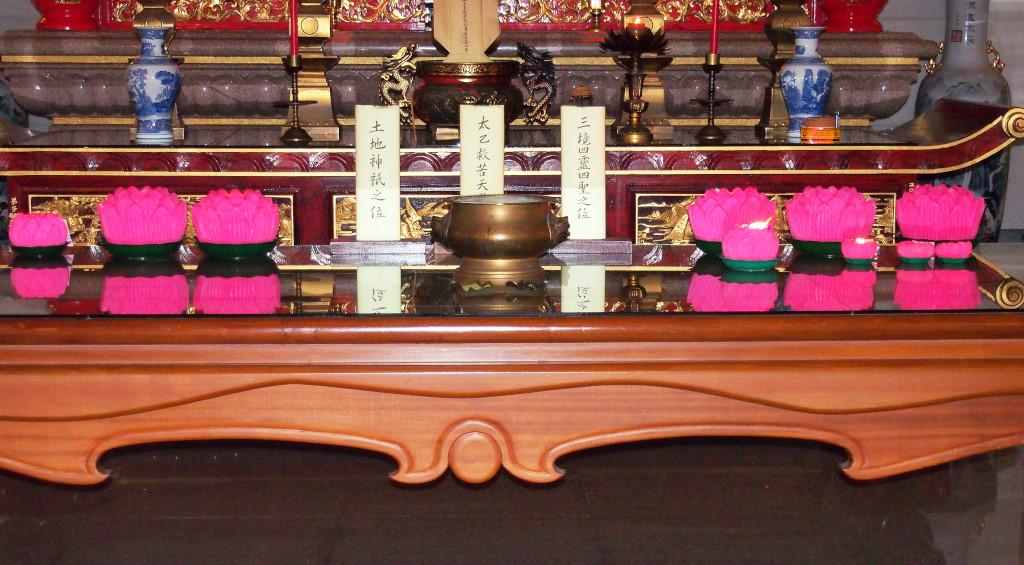
I could wait for some phantom bus that makes its rare appearance or take a taxi, but opt to risk walking along Jalan Pujut, the main road running through town. The night is perfumed with the aftermath of the day’s heavy rains, the smell of flowers mingling with water, fecund vegetation and oxygen, the air almost shockingly clean and fresh coming from the perennial pollution and asphyxiating heat of the rest of Southeast Asia.
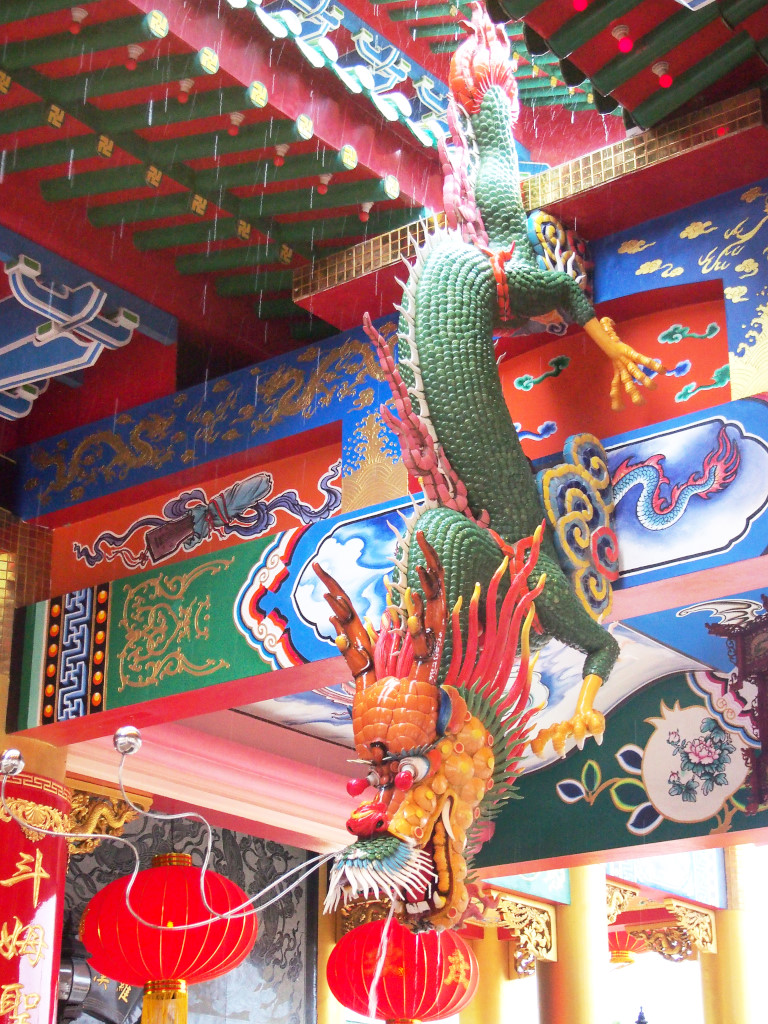
Given how broad the well-paved roads are, walking along the side is hardly a big risk, although trudging further into the grass in the dark runs the risk of an unwanted encounter with a creepy crawly.
I come across the tents of a circus whose large and somewhat faded signage beckons visitors to take in their spectacle, something I would consider if I wasn’t heading to the night market located somewhere beyond.
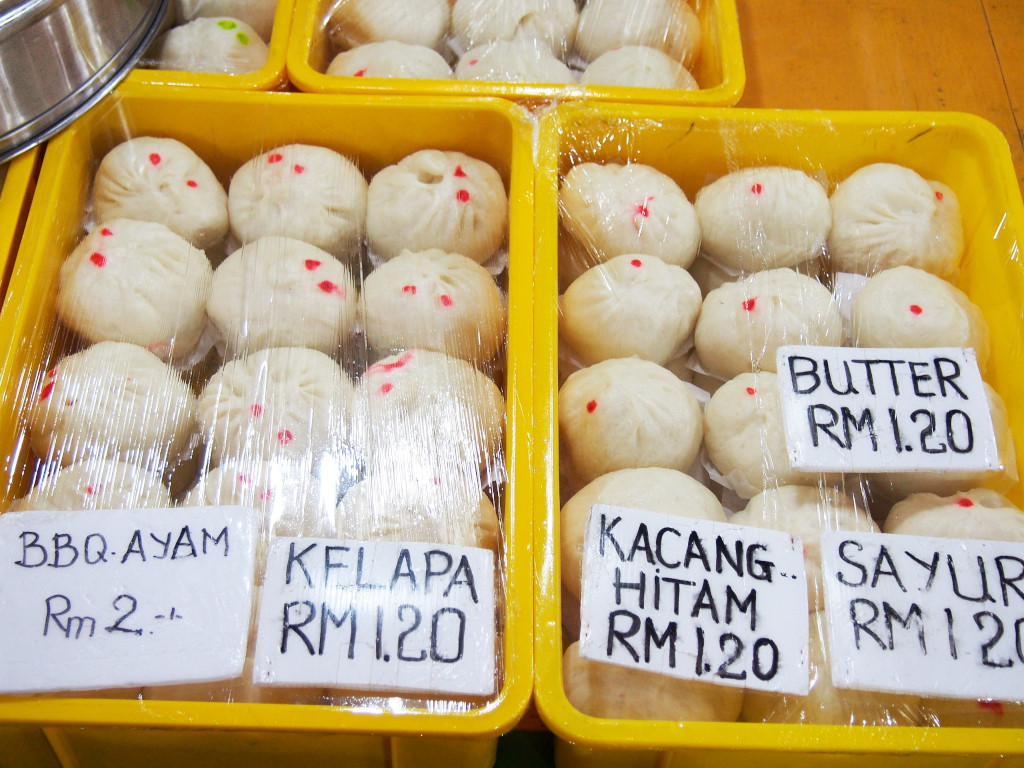
Slogging through the pools of water along the roadside seems somewhat pointless, but the illuminated arc of small tents in the distance could be Saberkas, only that there seems to be no way of entering from the roadside. I have to follow the arm of the main road all the way to the far end before being able to retrace my steps from within the city block on which the market terminates, another brilliant example of Malaysian urban design.
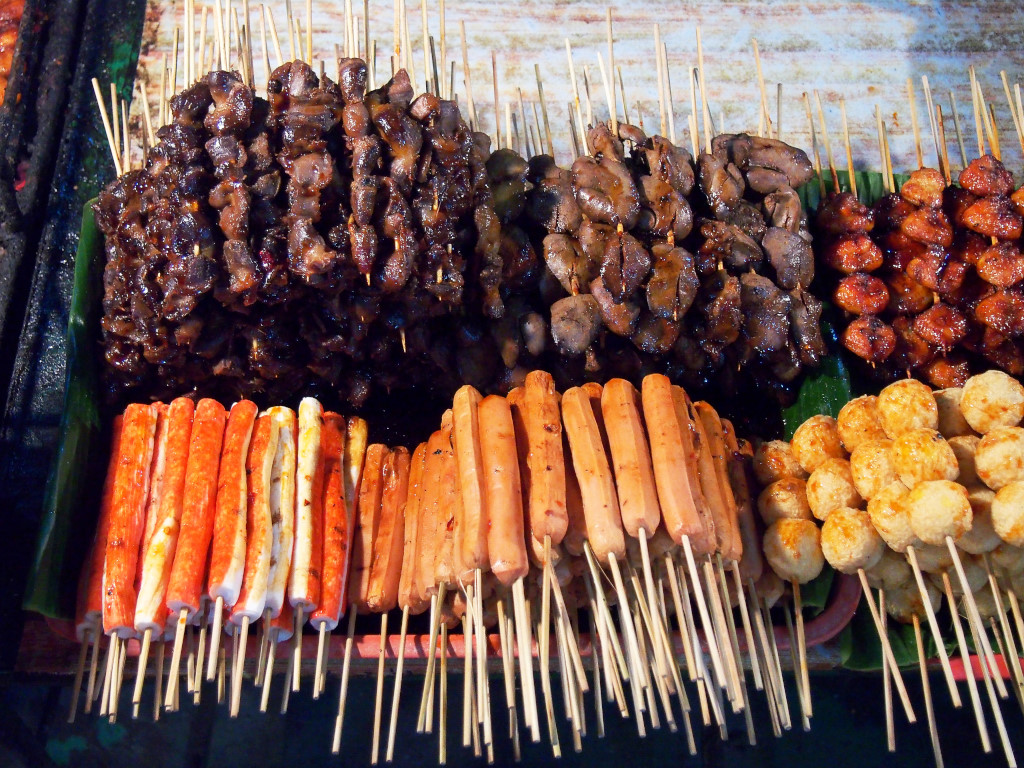
The market itself is an orgy of local Malay food, various classes of foods grouped into separate sections, cooked foods on one side and produce on the other, with a small adjoining section for clothing and notions. At the entrance, the visitor is greeted by several rows of satay and grilled fish vendors, one young attendant telling me that each of the vendors uses a unique recipe of sambal to baste their fish, which I can only imagine to be incredibly tasty.
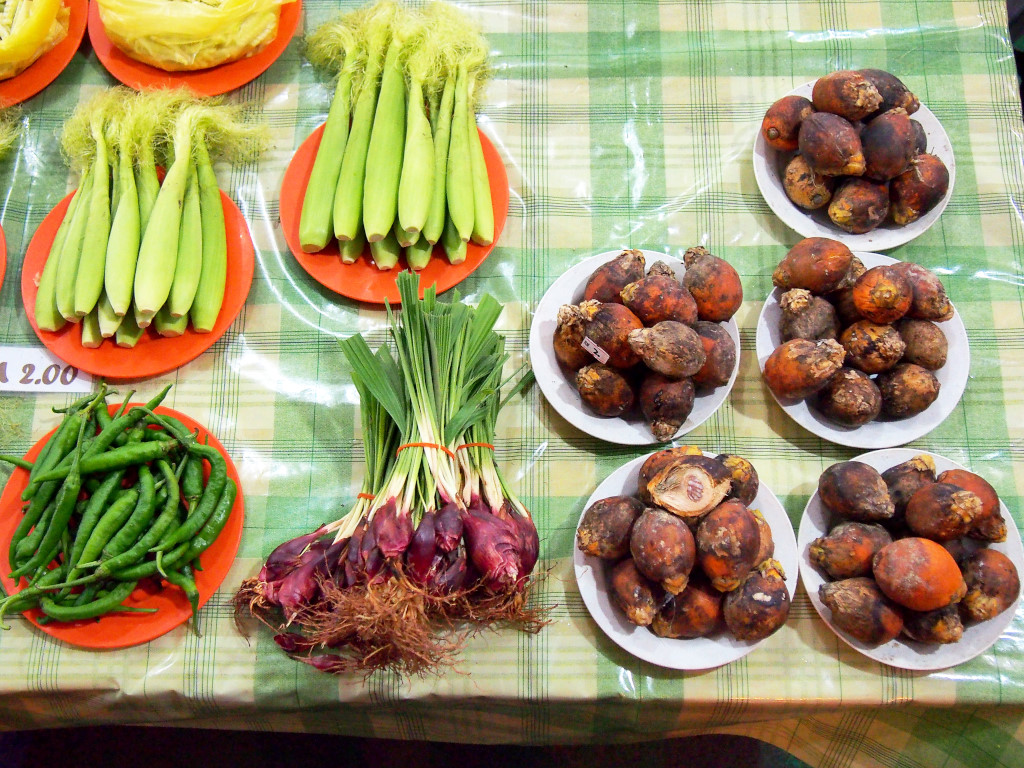
The remaining grills are devoted to satay chicken, surimi and possibly some other meats, although pork would not be making a presence here. My initial enthusiasm for this section is tempered on leaving by the fact that there is nowhere to eat the grilled fish. Then the sauce the satay is basted in seems relatively flavorless.
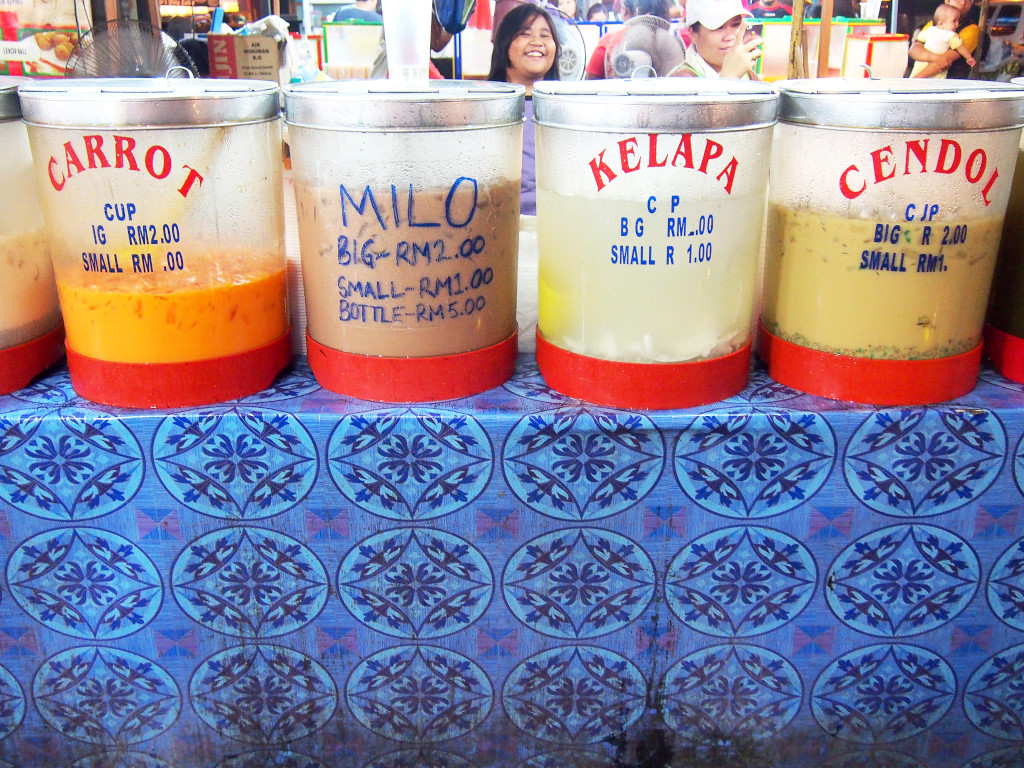
The air is hazy from the smoke of the grills. The locals attending to or milling around the stands look at me with a combination of curiosity, expectation and sheer enthusiasm. The older Malays are very serious and somewhat distant, however friendly they may be, while the young are exuberant and sweet, eager to be helpful when the opportunity arises. I am somewhat leery about taking photos of women, even though western Malaysian Malay women largely don’t care, and are probably more often than not happy to be photographed.
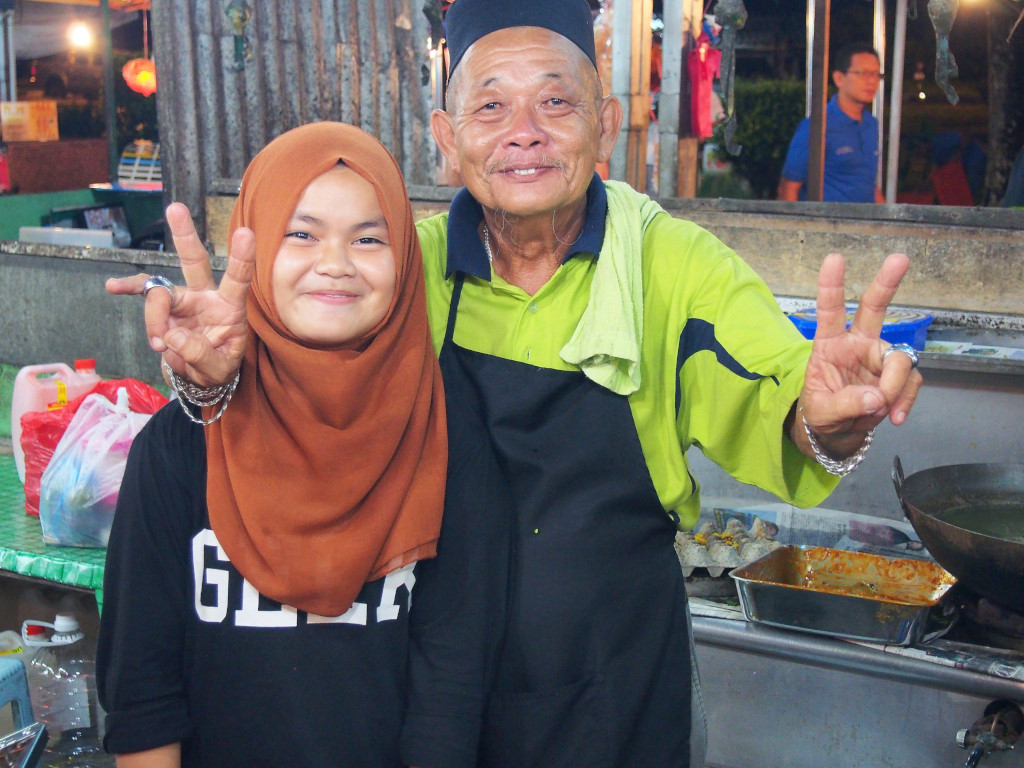
True to the Malay spirit, the market is somewhat rustic but reflects a sense of fastidiousness, much of the food I see here unexpected, unlike what I had seen in western Malaysia, not that I am an expert in Malay food. I am assured that the fish on display is from the ocean, since the sweet water fish simply doesn’t have the same quality, something that definitely resonates with me, given the terrible fish I ate inland in Myanmar.
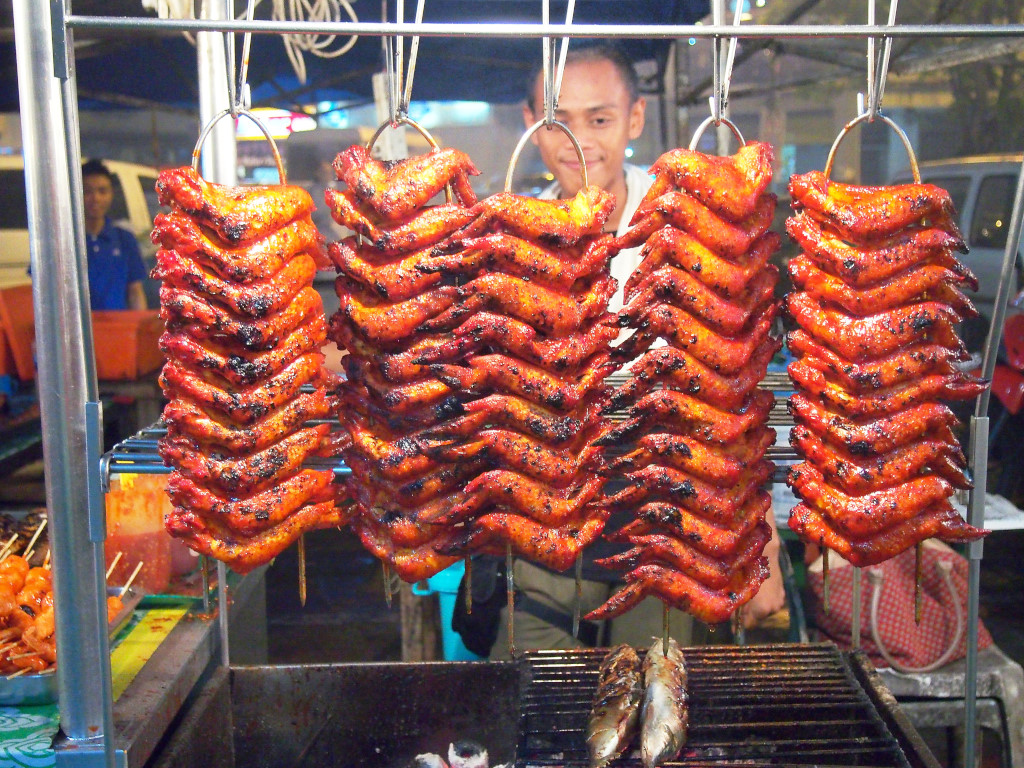
Grilled chickens whole and reduced to the smallest parts are artfully arranged in vendors’ booths, although the tails and gizzards I have no interest in, having seen absolutely too much of the same on the streets of Thailand and Myanmar. One of the great Southeast Asian specialties beckons, pulut, or sticky rice stuffed in banana leaves and amended with various meats in spicy sauce, then grilled, something I can never get enough of, not that I love eating endless amounts of rice.
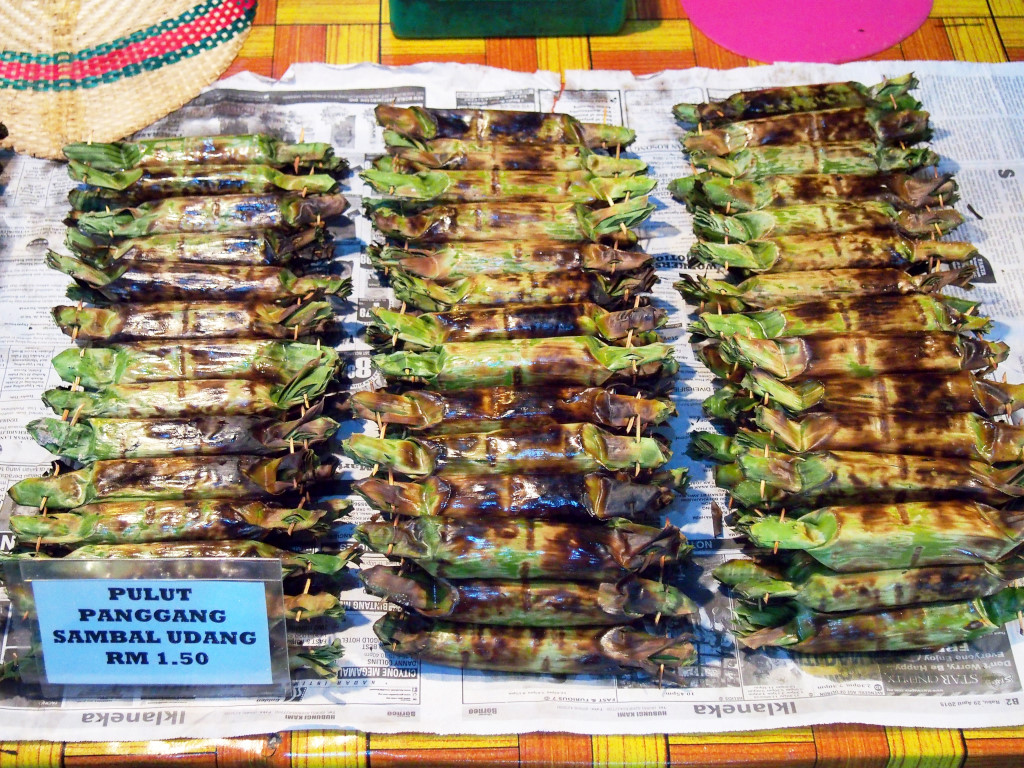
Buffet trays heave with a variety of types of fried rices and noodles, followed by large, Malay-style bao xi buns, stuffed with curried beef, curried chicken, red bean and coconut. Most wares are fastidiously signed and priced, which elicits interest and the knowledge that you would not be cheated, unlike the experience I had throughout Myanmar, where prices were typically not included on menus, which I can’t help as seeing as somewhat dishonest in motive.
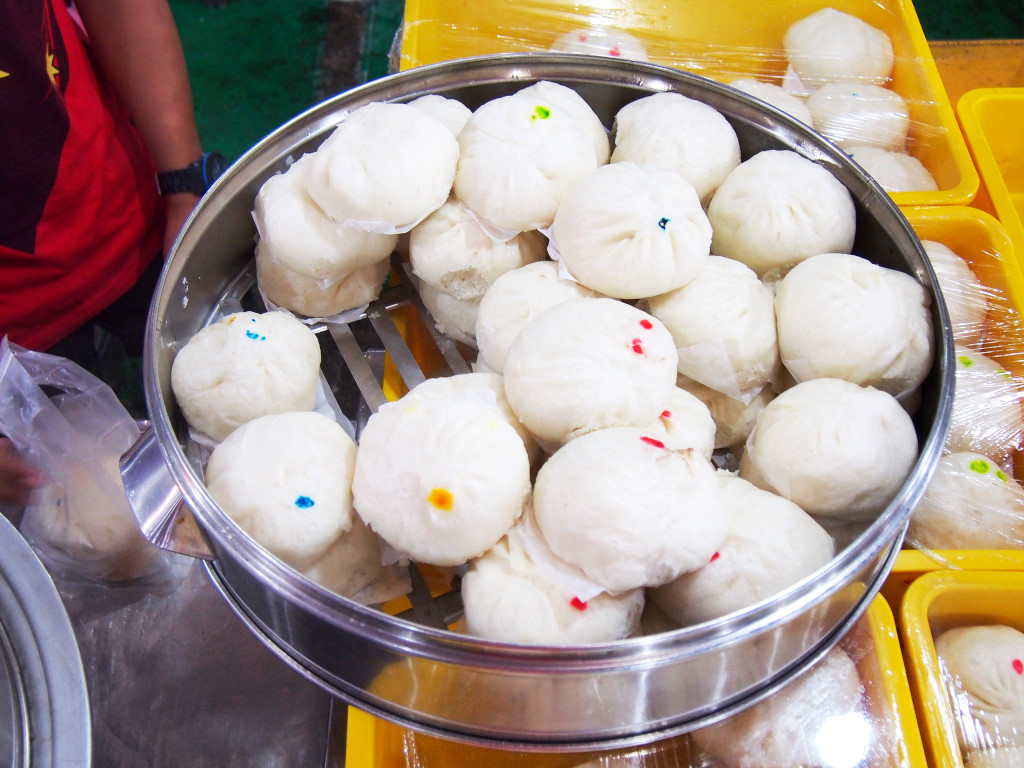
On the fresh side, there are intriguing examples of local vegetables and fruit I don’t recall seeing elsewhere, such as the midin, the Sarawakian fern, red shallots, what look like squashed young corn pods but are probably not, a fruit of some sort that looks like a small persimmon with the rind of unripe tomato, the bananas, coconut and variety of chilies, less exotic but no less appealing.
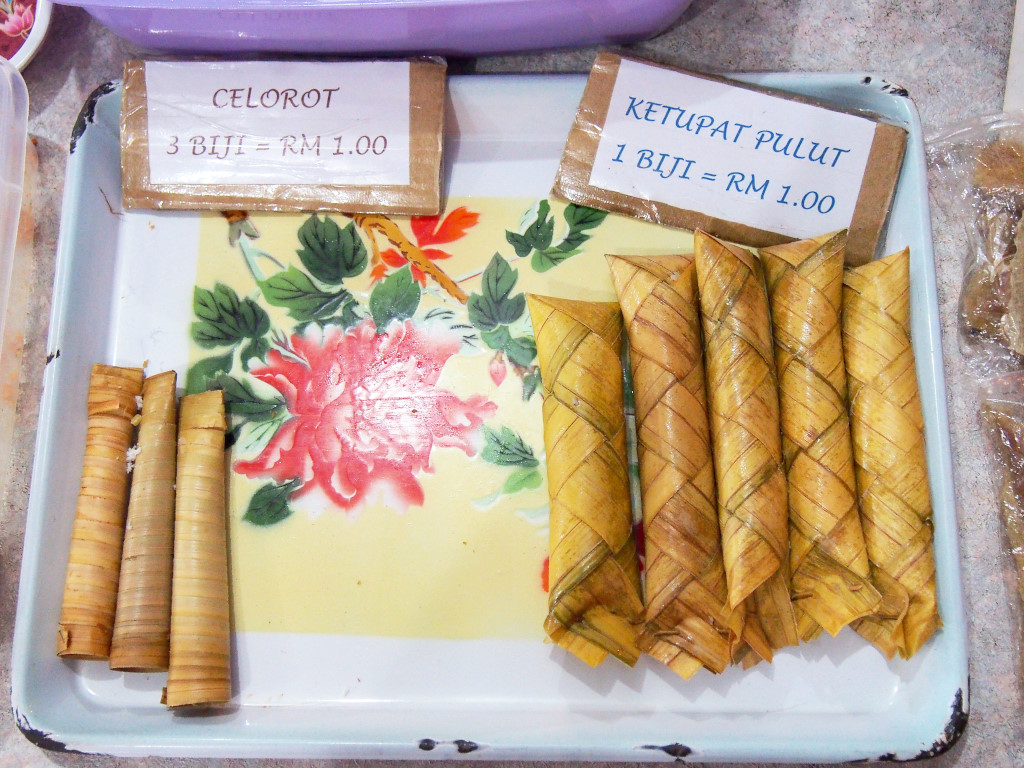
One vendor happily cracks open what turns out to be a betel nut, insisting I try some, even the small chip I ingest making its mark on my temperament. The same man sells more pulut, balls of sticky rice bathed in various preparations, including coconut flakes and sambal, in addition to small, bamboo-swathed cones of rice gluten mixed with palm sugar.
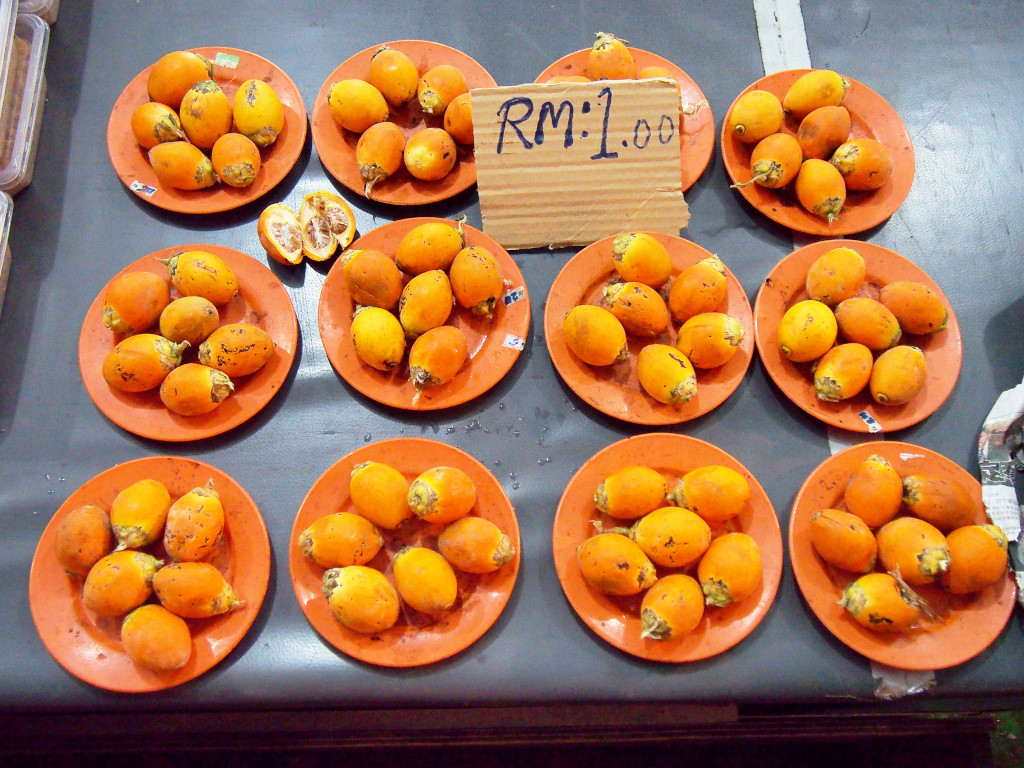
Drink vendors offer their wares from rows of transparent glass canisters, featuring the obligatory heavily sweetened and iced fruit and coffee concoctions the Malaysians love so much. Another vendor tells me that he has traveled around the country but likes it best in Sarawak, as it’s just more natural, relaxed and free, with a far smaller population occupying a much larger space. The problems between the various ethnicities experienced in western Malaysia don’t happen here – people all get along and mix freely.
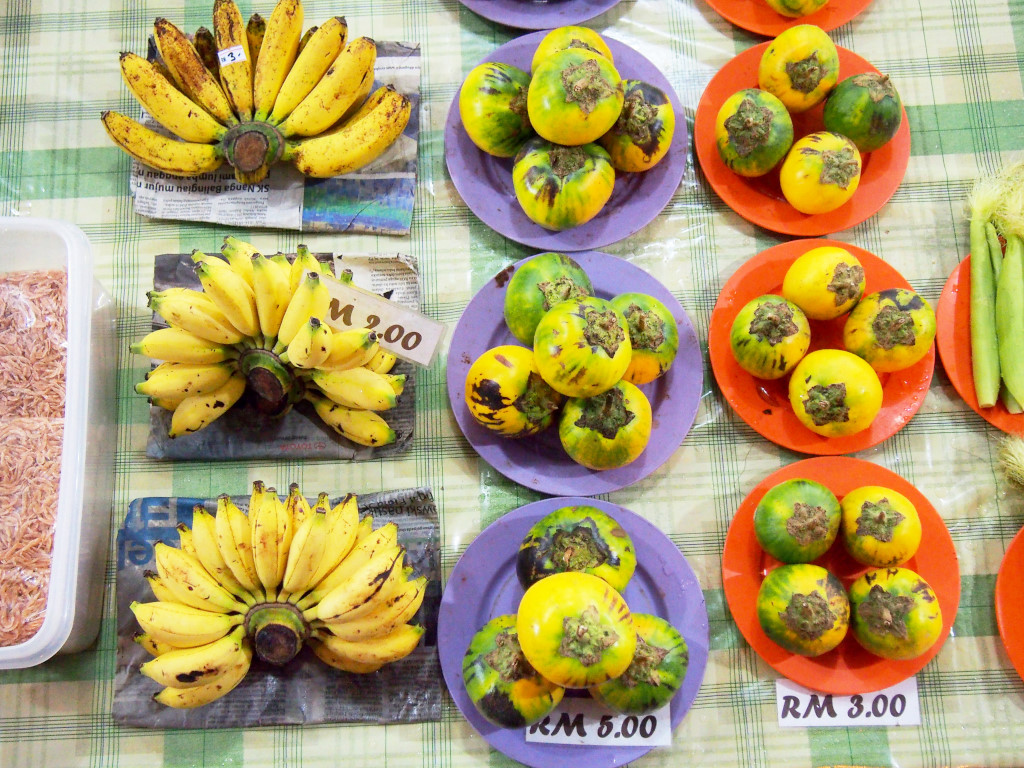
I walk all the way back to the Pelita Centre in the fecund evening, water dripping from the trees, the air bright and fresh, the grass soft under my feet as the cars rush past me to their own respective destinies.

